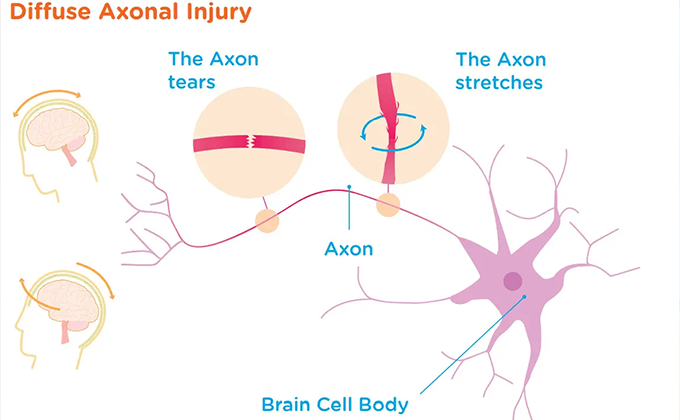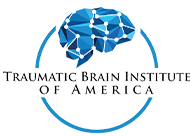Traumatic Brain Injury (TBI)
Traumatic Brain Injury (TBI) often occurs when your head experiences a significant impact, like in a car accident, a fall, or if something hits your head. During such incidents, your brain can be jostled or bumped inside your skull. Just as a computer has different parts for various functions, your brain has areas controlling your thoughts, movements, and emotions. When it is injured, these functions might not work properly.
In some cases, doctors need to run diagnostics to understand the extent of a TBI. These tests provide insights into what is happening inside your brain and guide them in developing an effective treatment plan. The positive news is that today, there are therapies designed to expedite healing and minimize long-term issues resulting from TBIs. Your brain is irreplaceable, so let us prioritize its well-being!
What is Diffuse Axonal Injury?
Diffuse axonal injury (DAI) is a serious type of traumatic brain injury (TBI) that happens when the brain gets shaken or twisted hard. Imagine your brain is like a bowl of jelly with lots of tiny wires running through it. In DAI, these tiny wires, called axons, get stretched and torn throughout the brain, kind of like when you pull on a bunch of tangled strings. This happens because of strong forces during accidents, like car crashes or falls.
These injuries to the brain’s wiring can cause all sorts of problems with how the brain works. People with DAI might have trouble thinking clearly, moving their bodies, or feeling things properly. Sometimes, they may even lose consciousness or go into a coma. Doctors use special machines called functional MRI (fMRI) scans to see what is happening inside the brain. These scans show which parts of the brain are active and can help doctors figure out where the damage is and how bad it is. It is like taking a picture of the brain while sit is doing its job to see if everything is working like it should.

Types of Traumatic Brain Injuries
Traumatic brain injury (TBI) can be broadly categorized into acquired and non-acquired forms. Acquired TBI stems from external forces impacting the head, leading to brain injury. This category encompasses injuries caused by events such as falls, motor vehicle accidents, assaults, and sports-related incidents. Acquired TBIs range from mild concussions to severe traumatic injuries and typically manifest with sudden onset and identifiable external causes. In contrast, non-acquired TBI refers to brain injuries occurring without external trauma to the head. These injuries often result from internal factors like strokes, tumors, infections, or metabolic disorders. Unlike acquired TBIs, non-acquired TBIs may develop gradually over time and lack an obvious external cause. Distinguishing between acquired and non-acquired TBIs is crucial for accurately diagnosing and managing these conditions, as treatment and rehabilitation approaches may vary based on the underlying cause and nature of the injury.
These injuries to the brain’s wiring can cause all sorts of problems with how the brain works. People with DAI might have trouble thinking clearly, moving their bodies, or feeling things properly. Sometimes, they may even lose consciousness or go into a coma. Doctors use special machines called functional MRI (fMRI) scans to see what is happening inside the brain. These scans show which parts of the brain are active and can help doctors figure out where the damage is and how bad it is. It is like taking a picture of the brain while sit is doing its job to see if everything is working like it should.
